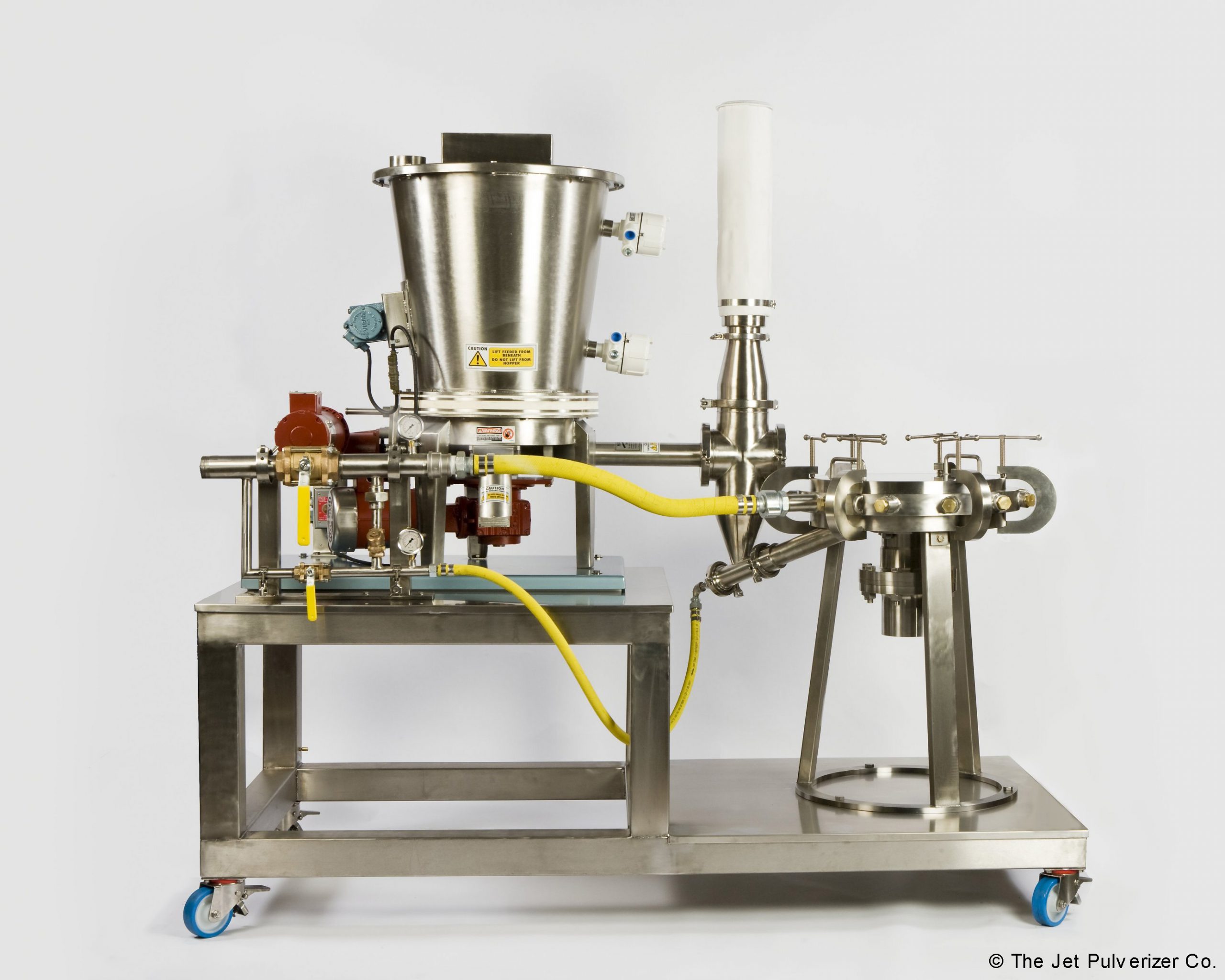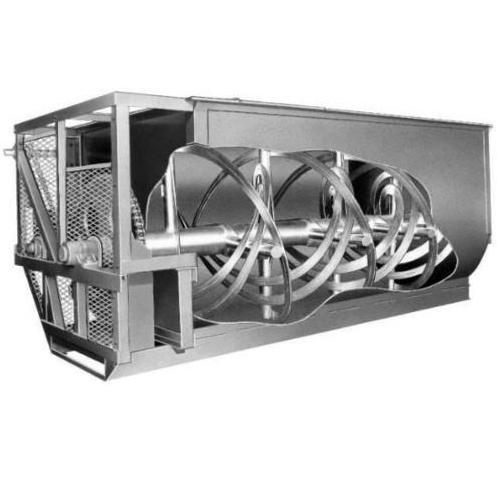By using a high-speed jet of compressed air or inert gas to impactions into each other, a jet mill grinds materials. Jet mills can be built to generate particles below a certain size while proceeding to grind particles above that size, leading to a narrow distribution of the resulting component in size. Through cyclonic separation, particles exiting the mill can be isolated from the gas stream.
Thanks to high-speed gas (air, steam) jets, jet mills are used to reduce the particle size, i.e. granulometry, of bulk solids. These bulk solids, usually foodstuffs, pharmaceuticals, metal powders, or minerals, may be of various kinds. Jet milling machines have the particularity to have no moving component in the very broad family of comminution equipment (size reduction equipment), and more specifically of impact mills, as the energy is provided by a gas emitted at high speed in a milling chamber where coarse particles are often added. The milling process is only carried out by the particles themselves or against the walls of the milling chamber by the influence of the particles.
In the manufacturing of medications and pharmaceuticals, organic and inorganic ingredients, agrochemicals, pigments, food color synthetic dyes, minerals, herbicides and pesticides, thermoplastics, and others such as heat-sensitive, corrosive, and abrasive materials, air-jet mills are commonly used. To achieve size reduction, the air jet mill utilizes compressed air, gas, or high pressure superheated steam. Due to interaction with external grinding media, these mills have no moving components, thus reducing pollution. In grinding, no extra heat is produced, making it the perfect method for grinding heat-sensitive and fragile materials.
The theory of size reduction introduced in a jet milling machine is to have a high-velocity effect, in between the particles, and in between the particles and the milling chamber. The energy required for such multiple high-speed impacts leading to very strong comminution of the feed particles is given by gas (typically oil, for air jet mills) pumped at high velocity. The Air Jet Mill operates on the energy of fluids. Inside the milling chamber, perfectly positioned jets generate a vortex. Stuff is fed along an engineered tangent loop through this vortex and accelerates at near super-sonic velocities. High-speed rotating, generating exponentially smaller fines, exposes the substance to particle-on-particle effect. Although large particles are pushed towards the periphery by centrifugal force, fine particles travel towards the core where they escape through the vortex finder.
It is possible to design jet mills from a few kg/h up to 6 t/h, usually for R&D laboratory environments. Even if such high capacity can be accomplished, it seems that most jet mills have a scale ranging from a few dozen to a few hundred kg/h, since they are used mostly for specialized pharmaceutical or cosmetic processing. To compact high volumes of petrol, very large jet mills often need a lot of electricity, leaving their economic rationale restricted to very particular situations.
There are various jet mills manufacturers in India. Moreover, there are various jet mill manufacturers in Mumbai and Promas Engineering is among those well-known manufacturers.




